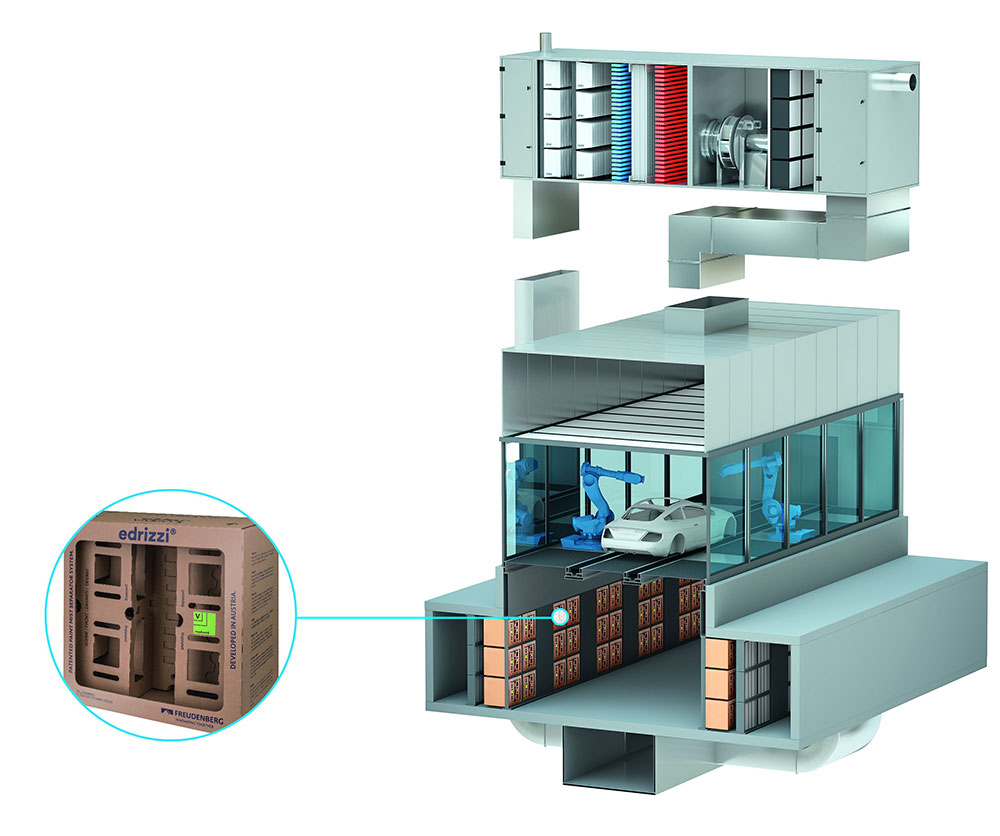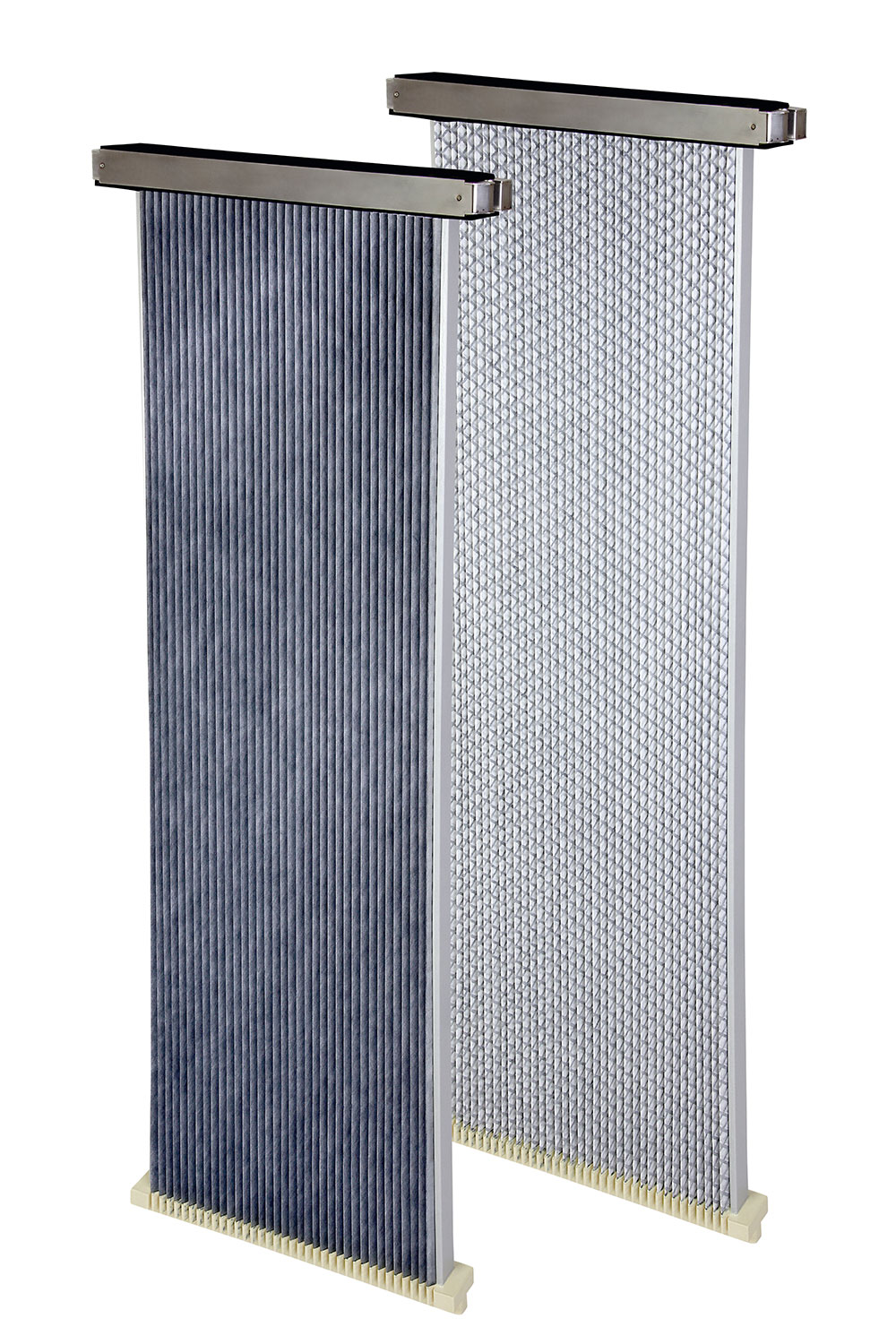Clever solution in paint plants
Paint plants in the automotive industry are energy intensive and need considerable resources, particularly water. Freudenberg Filtration Technologies develops smart processes that eliminate H2O and help industry and the environment.

Edrizzi carton boxes are placed under the floor of the paint line where they collect the paint.

By comparison: The Edrizzi Separator System with collected paint and before use in the paint plant.
Viledon DryPleat nano filter plate technology
Viledon DryPleat nano filter plate technology is another dry separation technology and Freudenberg Performance Materials played a key role in developing its filter media. These are the only filter media in the world that use nanofiber technology in painting systems. The high-tech application makes sense because the plates achieve extraordinary filtration performance in limestone dry separation plants: The wet paint mist is mixed with fine-powdered limestone in the plant’s exhaust air stream. The dust adheres to the plate surface, which has a very low air flow resistance thanks to the nano-coating. A dry dust cake then forms on the exterior and compressed air from the interior of the plate regularly detaches the dust cake. The nano-coating makes it uniquely simple and energy saving. The dust cake falls downwards against the air stream, is collected and later disposed of. “Compared to conventional sintered plastic plates, nano filter plates can reduce energy consumption by up to 50 percent” says Becker.
Consultation and service from the start
Freudenberg uses the new technologies and processes worldwide in close cooperation with plant manufacturers - e.g. Geico Taiki-Sha - either for new installations or by retrofitting existing water systems to dry ones. "Nearly 80 percent of all new car manufacturing paint plants now use dry systems," estimates Jürgen Becker. There is also a stable positive trend for retrofitting. Freudenberg's sales, filtration technology and development teams have done a lot of informing and persuading. After all, factories are hesitant to abandon the painting processes they have used for decades.
So, Freudenberg specialists work closely with their customers from the start and support all stages of the retrofitting process. They study the technical requirements, processes and logistics on site. They measure, test, advise and find the best design for all the components in a paint line. And even afterwards, the cooperation continues, says Jürgen Becker, because there is still much that can be optimized on the factory floor. “Our service teams are always ready to provide assistance during production, even daily if required.”
